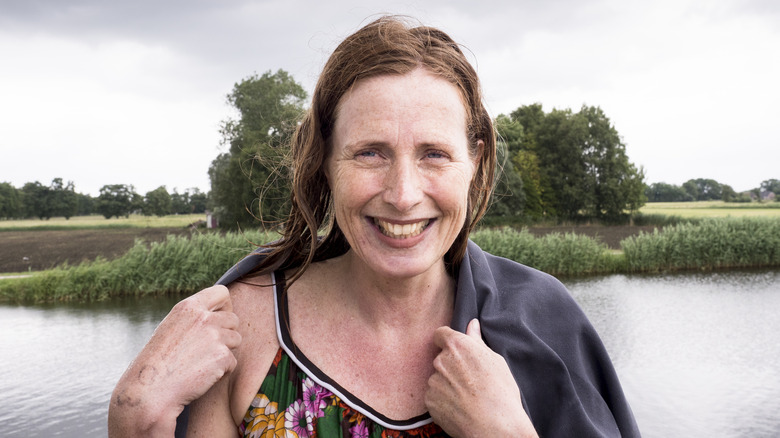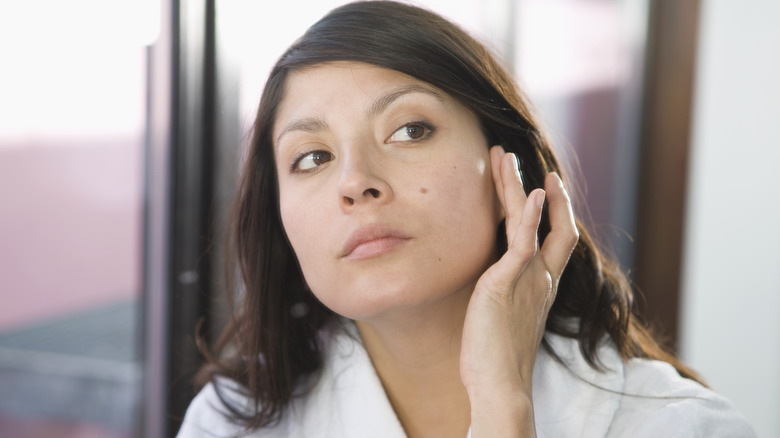
Lucy Lambriex/Getty Images
Breast and prostate cancer might have more awareness campaigns, but skin cancer remains the most common cancer in the United States. With skin cancer instances on the rise, the American Academy of Dermatology says that one out of five people will develop some form of skin cancer in their lives.
Although the Skin Cancer Foundation says women under 50 are more likely to be diagnosed with the deadly melanoma, women over 50 aren’t off the hook. Dr. Aanand Geria, a board-certified dermatologist at Geria Dermatology, tells Health Digest that age is a risk factor for non-melanoma skin cancer.
“Cumulative sun exposure over time plays a significant role, as UV damage accrues with age, weakening skin resilience and heightening cancer risk,” Geria said. “Hormonal changes around menopause, such as decreased estrogen, can also reduce skin thickness and repair ability, making it more susceptible to damage.” Geria adds that your immune system weakens with age, making it harder for your skin to repair itself from damage from the sun or environment.
Risk factors for skin cancer

Opat Suvi/Shutterstock
Age isn’t the only risk factor for skin cancer. The more time you spend in the sun without protecting your skin, the higher your chances of skin cancer. Tanning beds might make you look good for that wedding or reunion, but that puts you at a greater risk of skin cancer. Having a parent or sibling with skin cancer puts you at an increased risk for skin cancer. People who have lighter skin and eyes have less melanin to protect their skin from the sun.
Although melanoma can be fatal if not detected early, this type of skin cancer is less common. Most people’s skin cancer is either basal cell carcinoma or squamous cell carcinoma. Basal cells grow more slowly, whereas squamous cells are more aggressive. Both types of skin cancer can be removed by a dermatologist, and squamous cells can be fatal only if left untreated.
People over 40 should see their dermatologist every year for a full-body skin exam to look for any abnormal skin growths that could be cancerous. “I evaluate the scalp, face, trunk, arms, legs, feet, and sometimes nails and between the toes while patients wear gowns,” Geria said. “A dermatoscope, a magnification equipment, lets me examine moles and areas without surgery.” A biopsy might be necessary if he notices something unusual, but sometimes he suggests watching it for any changes.
When to be concerned about your moles or lesions

Antenna/Getty Images
Geria advises seeing your dermatologist if you notice any new moles or lesions. The ABCDE rule is an easy way to remember what to look for on your skin. The A stands for asymmetry, where one side of the mole doesn’t match the other. Check to see if the border of the mole is irregular or has poorly defined edges. A potentially cancerous lesion might have various colors, such as brown, white, or red. The diameter of a mole that is larger than the size of a pencil eraser is also suspicious. The E stands for evolving, so see your doctor if your mole or lesion changes color, size, shape, or color. The mole also might begin to itch or bleed.
“Additionally, new or changing lesions, sores that don’t heal, and any spot that looks different from others on your body (known as the “ugly duckling” sign) should be promptly evaluated by a dermatologist,” Geria said. Be sure to check unexpected places for skin cancer, such as your scalp, lips, and soles of your feet.
Credit: healthdigest.com










